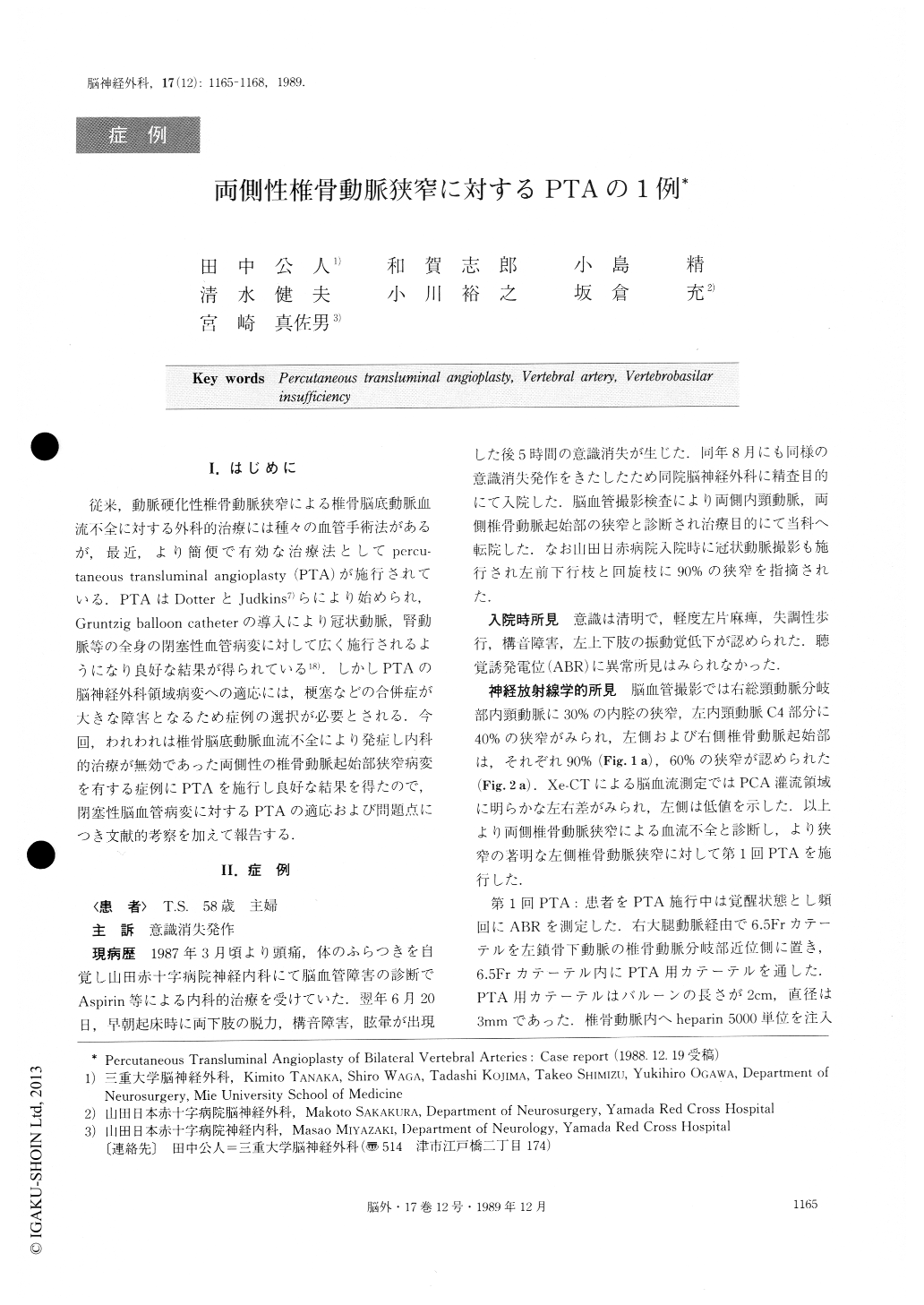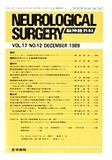Japanese
English
- 有料閲覧
- Abstract 文献概要
- 1ページ目 Look Inside
I.はじめに
従来,動脈硬化性椎骨動脈狭窄による椎骨脳底動脈血流不全に対する外科的治療には種々の血管手術法があるが,最近,より簡便で有効な治療法としてpercu—taneous transluminal angioplasty(PTA)が施行されている.PTAはDotterとJudkins7)らにより始められ,Gruntzig balloon catheterの導入により冠状動脈,腎動脈等の全身の閉塞性血管病変に対して広く施行されるようになり良好な結果が得られている18).しかしPTAの脳神経外科領域病変への適応には,梗塞などの合併症が大きな障害となるため症例の選択が必要とされる.今回,われわれは椎骨脳底動脈血流不全により発症し内科的治療が無効であった両側性の椎骨動脈起始部狭窄病変を有する症例にPTAを施行し良好な結果を得たので,閉塞性脳血管病変に対するPTAの適応および問題点につき文献的考察を加えて報告する.
A 58-year-old female suffered frequent attacks of un-consciousness due to vertebrobasilar insufficiency. She had a slight left hemiparesis, dysarthria, gait disturb-ance, and decreased vibration sense. Angiography re-vealed remarkable stenoses of the bilateral vertebral artery origin with inadequate collateral flow from the anterior circulation. Percutaneous transluminal angio-plasty (PTA) was performed on the more severely nar-rowed left vertebral artery through transfemoral approach. This was followed by PTA on the right one through transbrachial approach after an interval of 3 weeks.

Copyright © 1989, Igaku-Shoin Ltd. All rights reserved.


